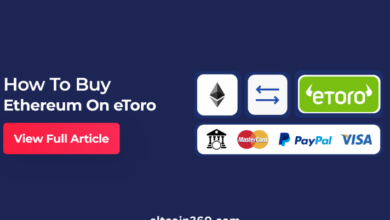What Is Ethereum updates 2023 and Why Is It Important?

I’d be happy to provide you with an overview of Ethereum updates in 2023 and their significance. Please note that my knowledge is up to date only until September 2021, so I cannot provide real-time information or updates beyond that date. However, I can offer insights into the types of updates and improvements that were anticipated in the Ethereum ecosystem at that time.
Introduction
Ethereum, the second-largest blockchain platform by market capitalization, has been undergoing significant updates and changes to address its scalability, security, and functionality concerns. Ethereum’s developers have been working tirelessly to upgrade the network, and as of my last update in September 2021, several key updates were expected to be implemented in 2023. In this article, we will explore the anticipated Ethereum updates for 2023 and why they are crucial for the future of the blockchain platform.
Ethereum’s Journey
Before delving into the specific updates, it’s essential to understand Ethereum’s journey and the challenges it has faced over the years. Ethereum, launched in 2015 by Vitalik Buterin, introduced the concept of smart contracts and decentralized applications (DApps). It quickly gained popularity due to its innovative capabilities, but it also encountered problems related to scalability, security, and energy consumption.
Ethereum’s Key Challenges
- Scalability: Ethereum’s scalability issues became evident as network congestion increased, leading to slow transaction processing times and higher gas fees (transaction fees paid to miners). This hindered its ability to support a growing number of users and DApps.
- Energy Efficiency: Ethereum, like Bitcoin, originally used a Proof-of-Work (PoW) consensus mechanism, which required significant energy consumption. This raised environmental concerns and called for a transition to a more energy-efficient consensus mechanism.
- Security: Security vulnerabilities and smart contract bugs resulted in significant losses of funds. Ethereum needed to improve its security measures to regain trust and ensure the safety of its users.
Ethereum Updates in 2023
To address these challenges and more, Ethereum planned several key updates in 2023. Here are some of the anticipated updates and their significance:
1. Ethereum 2.0 – Serenity
One of the most awaited and transformative updates for Ethereum is Ethereum 2.0, also known as Serenity. Ethereum 2.0 aims to transition the network from a PoW to a Proof-of-Stake (PoS) consensus mechanism. This shift will significantly reduce energy consumption and make Ethereum more sustainable.
Why It’s Important: Ethereum 2.0 is crucial for the network’s long-term viability, as it not only reduces energy usage but also enhances security, scalability, and decentralization. PoS encourages users to “stake” their Ether (ETH) as collateral, strengthening the network and promoting its stability.
2. Shard Chains
Another major feature of Ethereum 2.0 is the introduction of shard chains. These shard chains will divide the Ethereum network into smaller chains, each capable of processing transactions and smart contracts independently. This greatly increases the network’s throughput and scalability.
Why It’s Important: Shard chains are essential for Ethereum to handle a larger number of transactions and DApps simultaneously. This improvement will reduce congestion, lower gas fees, and enhance the overall user experience.
3. EIP-1559 – Fee Market Reform
Ethereum Improvement Proposal (EIP) 1559 is a significant upgrade designed to reform the way transaction fees work on the network. Instead of a purely auction-based fee system, EIP-1559 introduces a base fee that is burned, reducing the overall supply of ETH and potentially making it more valuable.
Why It’s Important: EIP-1559 is important for creating a more predictable fee structure for users, as it eliminates the uncertainty associated with fluctuating gas fees. Additionally, burning ETH can help control inflation and support the long-term value of the cryptocurrency.
4. Optimistic Rollups and Layer-2 Scaling Solutions
Layer-2 scaling solutions like Optimistic Rollups have gained traction as a way to enhance Ethereum’s scalability. These solutions allow most transactions to occur off-chain, reducing congestion on the main Ethereum network while maintaining security.
Why It’s Important: Layer-2 solutions are crucial for Ethereum’s scalability, as they can drastically increase transaction throughput while maintaining security and decentralization. This enables a smoother user experience and significantly lower transaction costs.
5. Enhanced Security and Smart Contract Auditing
In 2023, Ethereum continued to prioritize security improvements, including more robust smart contract auditing processes. Smart contracts are at the core of Ethereum’s functionality, and any vulnerabilities can lead to substantial financial losses.
Why It’s Important: Enhanced security measures, including comprehensive auditing and formal verification, are critical to ensure that smart contracts are free from vulnerabilities. These efforts build trust in Ethereum as a secure and reliable platform for decentralized applications.
6. Decentralized Finance (DeFi) and NFT Enhancements
Ethereum’s thriving DeFi ecosystem and the explosion of NFTs (Non-Fungible Tokens) have placed additional demands on the network. Updates in 2023 aimed to optimize Ethereum for DeFi and NFT applications, providing better infrastructure and developer tools.
Why It’s Important: DeFi and NFTs have been major drivers of Ethereum’s popularity, and optimizing the network for these use cases is crucial to maintaining its dominance in the blockchain space. It enables more innovation and growth in these sectors.
Conclusion
The anticipated Ethereum updates in 2023 are essential for the blockchain platform’s continued evolution and success. These updates address key challenges such as scalability, energy efficiency, and security while enhancing its capabilities for various applications, including DeFi and NFTs.
Ethereum 2.0’s transition to Proof-of-Stake, the introduction of shard chains, EIP-1559’s fee reform, layer-2 scaling solutions, improved security, and optimizations for DeFi and NFTs all contribute to making Ethereum a more robust and versatile blockchain platform.
As the blockchain space continues to evolve, Ethereum’s ability to adapt and innovate through updates like those mentioned above will be vital in maintaining its position as a leading blockchain platform. While these updates were anticipated in 2023, it’s essential to consult the latest sources for real-time information and developments in the Ethereum ecosystem.




